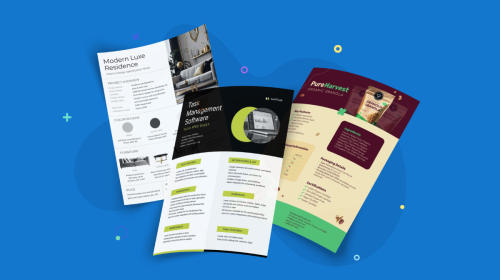
12 Essential Product Management Skills You’ll Need to Be a Great Product Manager


Product managers call the shots in product development.
As the driving force, you’re responsible for voicing the users' needs, developing a strategy and roadmap and taking products all the way from concept to completion. And, of course, you’ll have to coordinate cross-functional product development teams to make it happen.
To excel in your role and build successful products, you’ll need to acquire broad skill sets. And if you’re already an experienced product manager, you’ll have to continuously upgrade and sharpen your skills as you move up the corporate ladder.
So what exactly are the traits and top skills you need to be an elite product manager? What tools and resources do you need to have in your toolbox?
We'll answer those questions—and plenty more—in this in-depth guide about product management skills.
Product management skills refer to traits and attributes you need to develop to become a more experienced and successful project manager.
Why do they matter? The thing is, product management is a strategic role in every product- and service-driven company.
Product managers oversee the entire product lifecycle, from ideation to development to go-to-market and everything in between, primarily working with a team. Hence, they need to build a robust and diversified skill set, including soft skills and hard or technical skills.
By sharpening these skills, you are putting yourself in a better position to succeed in your job. Under your leadership, your team can build and ship out the best possible product and ensure your company stays competitive in the market.
When hiring or working with product managers, be sure to look out for the following traits:
1. Proactive. Being proactive means taking the initiative to plan ahead, seeking out new ideas and solutions and being vigilant about potential roadblocks.
Elite product managers should be able to take these proactive steps.
2. Strong Work Ethic. Product management is complex and involves many moving parts.
To manage the entire process, product managers need to be able to handle multiple tasks and ensure tight deadlines are met. They should also be available for constant communication and collaboration with various stakeholders, including development teams, customers and executives.
3. Confidence and Decisiveness. As a product manager, your team will look to you for guidance and direction.
Confidence and decisiveness will help you communicate and lead effectively, make timely and effective decisions and take the risks necessary for success. It can also inspire confidence in your team and help them focus on achieving their goals.
4. Accountable. Product managers need to take ownership of their work and be accountable for the success or failure of the product (outcomes). They should be willing to take responsibility, admit mistakes and work to make things right.
When talking about accountability, here’s one key point to consider. There’s a thin line between being responsible for an activity and being accountable for the entire process.
For example, during product development, the research department may be responsible for commissioning products or customer research. But you are accountable for ensuring they ask the right questions and get the right answers to help the company make the right product decisions.
Streamline your product and market research and present detailed insights using the template below.
Soft skills are critical, as they help product managers build strong relationships, lead cross-functional teams, make strategic decisions and deliver successful products. Here are some key soft skills you should possess:
The bulk of a product manager's job entails ensuring all the cross-functional teams work together as a unit to achieve set goals.
To achieve this, you need to be able to communicate effectively with various stakeholders, including customers, developers, designers and executives. Also, you need to ensure everyone on the team is able to communicate with each other.
Why does it matter? Well, at some point, you’ll have to:
You also need to know how to craft product requirement documents, prepare exceptional slide decks, product plans or strategies, draft product development charters and more.
Whether it’s written or verbal communication, conveying complex ideas in a simple and understandable way can make all the difference.
Where to start. Whether you’re a veteran or you’re new to the trade, start by revamping your communication skills. Here’s how you can do that.
Check out how this product presentation template uses images, icons and charts to communicate key information.
Product managers need to be critical thinkers because their role involves making decisions that impact the success of the product and the company.
The reality is that product teams often get lots of ideas, feedback from users and data from market research and more. Product managers need to analyze this information, evaluate options and make informed decisions based on evidence and reasoning on how best to proceed and deliver value to the organization.
Where to start. Put on your critical thinking cap when developing products. In an era where everything can be measured, don’t fall for everything you’re told. Try to overcome cognitive biases based on underlying assumptions by analyzing data and drawing critical insights from:
The ability to analyze data and understand metrics can help you optimize the product roadmap and drive product outcomes that create value for your business.

Leadership is a critical skill set for product managers. According to a recent survey, 69% of professionals view product management as a leadership role.
As a product manager, you’re responsible for the product's success and the team that develops and delivers it. And every other person on the team will look to you for guidance and direction.
Therefore, you need to be able to do these things:
Where to start. Prioritize honing your leadership skills and raising more leaders on your team? Take the time to continuously learn more about your role and encourage your team to do the same.
Next, give your team the tools and resources to succeed and set realistic expectations. Create a culture of empowerment and encourage them to take ownership of their work. Then learn how to delegate tasks to the right people and give them the support they need to succeed.
In the world of product management, the pace of change is so fast today that we see new products, technologies, competition and customer demands almost daily.
Product managers shouldn’t be afraid to switch things up or change trajectory in response to changes in the business landscape and any problems the market tosses their way.
Flexibility entails adapting to changing circumstances and making quick decisions and plans based on new information or feedback. It’s also evident in the manager’s ability to prioritize or reprioritize features, requirements and tasks.
When you’re decisive about your top priorities, your team can maximize efficiency. Plus, your team will stay winning and easily scale hurdles like late deliveries.
For example, when prioritizing tasks, you’ll be faced with tough decisions like:
Where to start. Once you have identified your goals and objectives, determine the urgency of each task. Next, consider the impact of each task on your product and your team and prioritize those with the greatest impact.
Next, consider your available resources, such as time, budget and personnel. Then get input from your team and other stakeholders on what tasks are most important.
Then create a product roadmap and product plan to stay organized and focused on your most important tasks. Finally, reassess your priorities regularly to ensure that you stay on track and adjust to changing circumstances.
Easily outline the vision, focus, priorities and progress of your product using this roadmap Gantt chart.
The template is fully customizable, so you can add text and new columns and change the order of your features and more. Here is how you can do that.
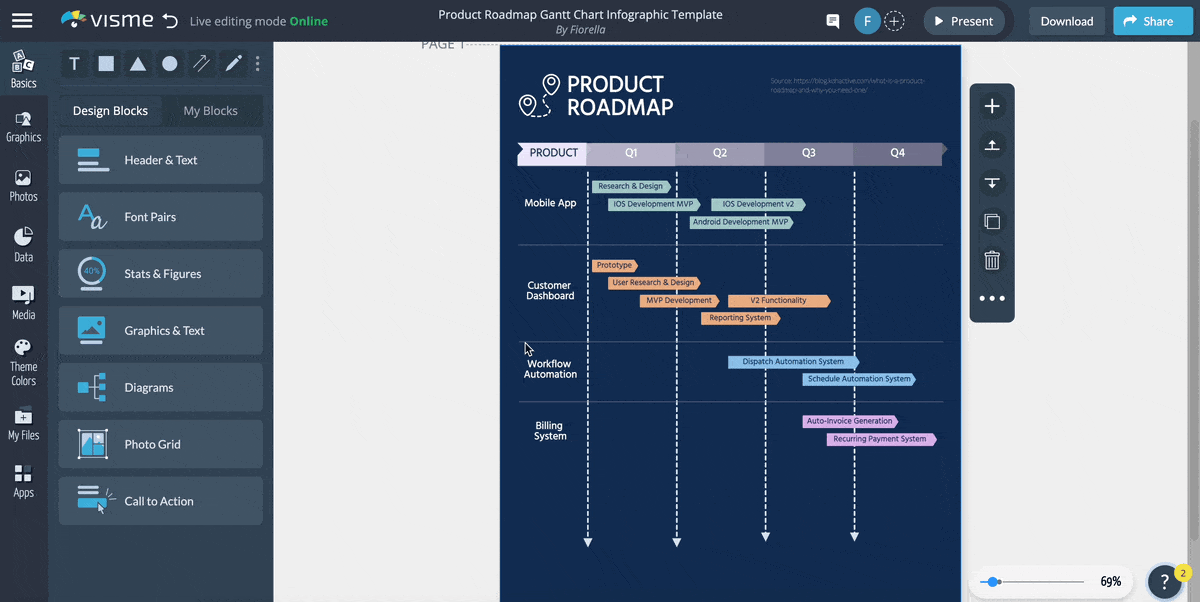
Product managers don’t work in silos. Instead, they work in tandem with various teams, including engineering, design, sales marketing and customer support, to ensure that the product is developed and launched successfully. Hence, they should be able to build strong relationships with team members and collaborate effectively to solve problems.
One question that often gets asked is: How can product managers effectively communicate and collaborate with different teams? We’ve got good news. Visme has everything you need.
Where to start. During ideation, research and planning, product teams can effectively brainstorm and come up with novel ideas or analyze research data using our online whiteboard tool. You’ll also find tons of whiteboard templates to get you started quickly.
When prototyping, Visme has lots of intuitive wireframe templates for creating product prototypes.
When working with both wireframes and whiteboards, Visme makes collaboration super seamless.
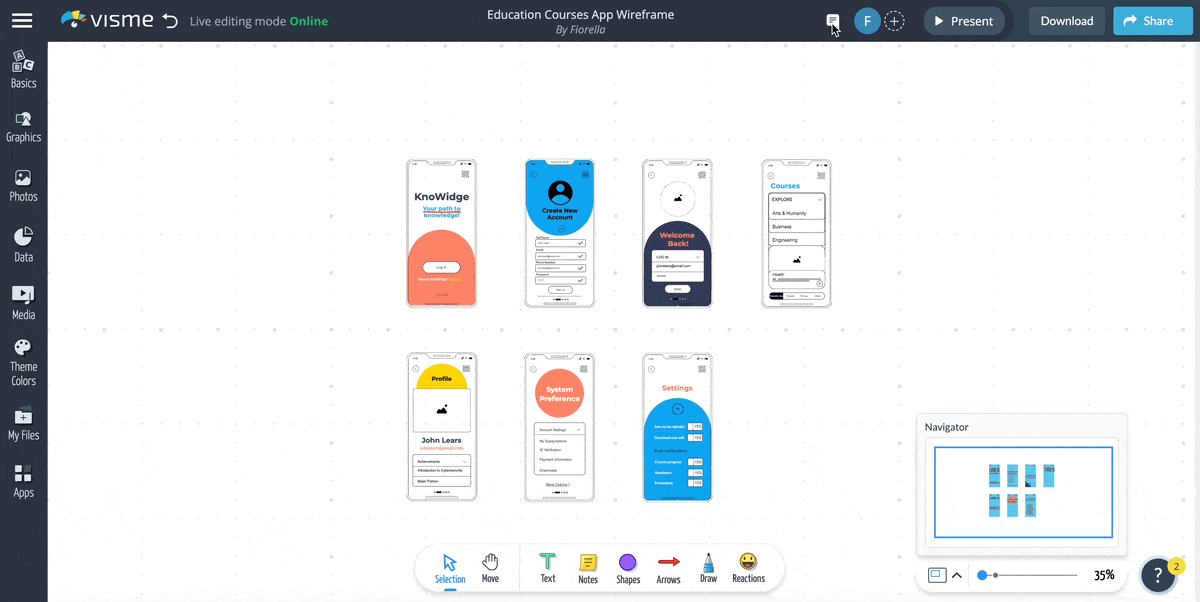
Managing time effectively is something many people struggle with. But the hallmark of successful product managers lies in their ability to juggle multiple activities, prioritize tasks, stay organized and be productive.
Where to start. Read this article to learn 15 best practices to help you improve your time management. In the video below, we’ve also discussed the top 10 time management tools and apps to help you optimize your time and increase your productivity.
Another important soft skill that’s often neglected is the need for product managers to be business savvy.
Product managers must proactively marshal their plans in line with company-wide goals and performance benchmarks. When this happens, you can make decisions that accelerate the company's growth.
Where to start. Beyond focusing on new features and improvements, you need to determine:
Below are a set of hard skills product managers need to manage the development and success of their products effectively.
This is a no-brainer. Product managers shouldn’t just love great products but have a knack for developing excellent ones.
Having great taste means being innovative, forward-thinking and disruptive.
They should be able to pinpoint what needs have not been met and how they can be improved. What product features will wow a customer and address their core needs? What makes customers fall head over heels for one product and detest another?
When the product manager is genuinely passionate, innovative and customer-centric, it rubs off on the entire team, leading to the development of excellent products.
Where to start. If the product manager is new, he should have the skill set and toolkit to learn about your industry and customers.
Research skills are key to building products customers love and putting your products on a successful path. According to LinkedIn, research and analytical skills are among the top 10 most in-demand skills for 2023, alongside communication, leadership and management.
By mastering research and data analysis skills, product managers can:
Where to start. Tools and resources like Think With Google, Survey Monkey, Typeform, Jotform and Formstack are helpful for conducting user testing and market research.
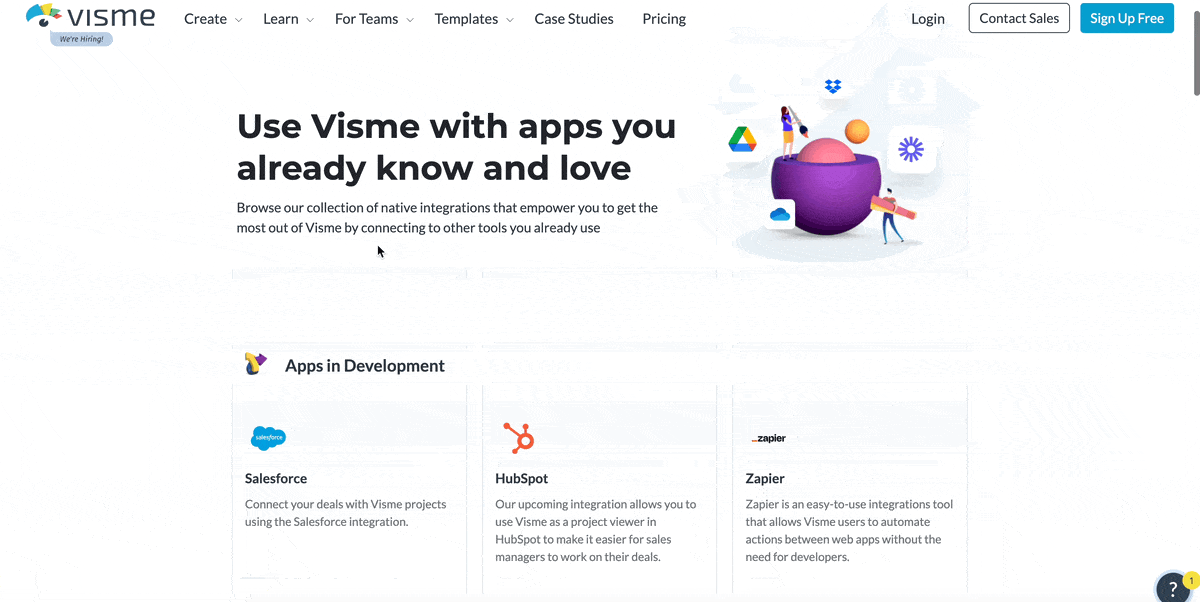
Visme allows you to access all of the amazing features of these tools all in one place. With Visme integrations, you can create surveys, embed forms into your project, and collect important data from respondents.
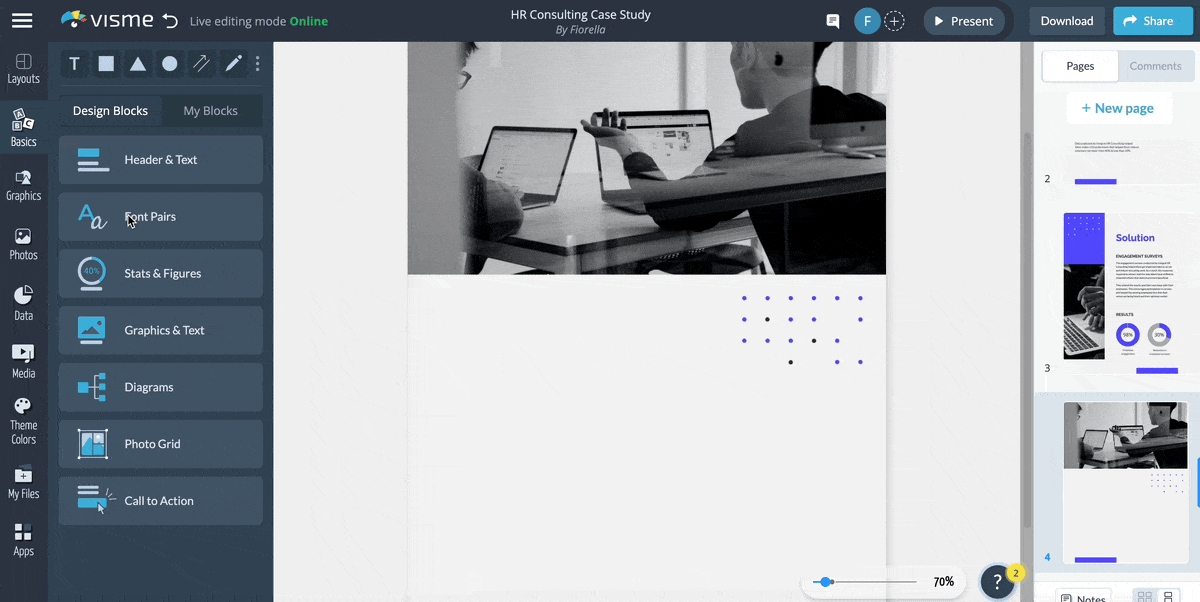
What’s more? You can also do these to create stunning data visualizations and make them interactive.

Once done, share or publish your survey findings or present your results using the Visme Presenter Tool.
The best part is that you get to do all of these things and much more without leaving Visme.
User experience (UX) and user interface (UI) matter a great deal in product development.
Great UI/UX design isn’t just about aesthetics. It’s also about having an accessible, functional and intuitive product that delights users. When users love your product design and have a feel-good experience, they’ll engage with it and become sticky.
Product managers should have a bare knowledge of UI/UX design principles. They should also be skilled at creating prototypes for illustration or testing purposes.
Here’s why it matters. First, prototypes serve as tangible visual aids for explaining your vision or expectations. Second, it takes the conversation beyond mere concepts and provides a frame of reference for what the actual product will look like.
Where to start. Visme provides a wide range of easy-to-use tools and templates that help even non-designers create professional-looking prototypes, wireframes and mockups. You can visualize your ideas and prototype web pages, tablets, mobile and web apps and even marketing materials.
Watch the video below to learn how to create your prototypes using Visme’s wireframe software.
Now you’re probably asking, "Do I need to code?" Am I doing the job of the technical team?
Product managers shouldn’t spend their time coding, fixing or doing other technical tasks. If you already know how to, that’s great. But as a product manager, you need to have a basic understanding of these things:
Here’s what Olha Zaplatynska, Senior Product Marketing Manager at Visme, has to say:
“Great product managers must have versatile backgrounds in coding or development, marketing and UI/UX, and a deep understanding of the field or the product niche.
These skills enable them to speak the developer’s language and understand the technical requirements and nuances of the technical work. Also, they’re able to set realistic expectations for tasks and product roadmaps."
Where to start. Begin by learning about your company’s technology and product stack. This includes all of the technologies, apps, systems, databases, codes, servers and other resources used to bring your product to the market. This will help you see things from the perspective of the technical team and communicate with them effectively.
Product managers should be adept at agile development methodologies like Scrum or Kanban. They should be able to take on these responsibilities:
Where to start. Read this article to learn more about agile project management. Then leverage Visme product management templates to optimize processes and scale your development efforts.
Are you eager to excel in your role and unleash your full potential? Product management templates and resources can help you in several ways, including:
Visme has a wide range of templates to help you streamline your product management processes.
Visualize the vision and progress of work for your product, including current features and future updates, using this intuitive infographic product roadmap template below.
The template below is ideal for visualizing the roadmap for multiple products.
If you’re a disciple of the Scrum project management methodology, this roadmap template is your best bet.
We have lots of product roadmap templates for Kanban enthusiasts.
Present your product roadmap to key stakeholders involved in the project using this presentation template.
Showcase your product or business idea and win over prospective buyers with this product presentation template. You can customize it to introduce or promote both digital and physical products.
Building a physical product? Announce the development or launch of your physical product using the presentation template below:
The beautiful thing is that we’ve got more where these came from. Browse Visme’s library to choose from 500+ presentation templates.
Provide a layout and easily keep track of product development using this colorful Gantt chart template.
Visualize the entire product development process, optimize the workflow and increase efficiency using this editable template below. You can customize this template to any desired dimension, edit content, add images, apply custom colors, input your own fonts and logo and more.
With this product launch plan template, you can walk your team through every step of your strategy and execute your rollout without glitches.
Map out your next product launch and guarantee its success using the product launch day flowchart.
Product management blogs often provide insights, experiences, best practices and valuable resources, such as templates, checklists and guides. Popular examples of product management blogs include:
Product management books cover the principles and practices of product management. They also provide insights into the methodologies, frameworks and tools used in product management.
Examples of project management books include:
Product management courses can be a valuable investment for your career. Beyond gaining new insights, you get to learn from experienced instructors, get hands-on experience, build your skills and advance your career.
Here are some of the top-rated schools, certifications and courses out there.
You can also get free and paid online product management courses from websites like Edx, Coursera, Udemy, LinkedIn Learning and so on.
These communities provide an opportunity for you to connect and network, learn from others and stay up to date with industry trends. Here are communities you can join:
There you have it. We’ve covered everything you need to upskill and become a top-tier product manager.
Whether you’re a new or seasoned product manager, you need the right tools and resources to improve your performance. That’s where Visme shines.
Take advantage of Visme’s resources and templates for product managers. You can easily develop stunning product plans and roadmaps, product development reports, progress reports, sprint Gantt charts, Kanban boards and prototypes - without professional design experience.
So buckle up and take your career to the next level with Visme!
Design visual brand experiences for your business whether you are a seasoned designer or a total novice.
Try Visme for free